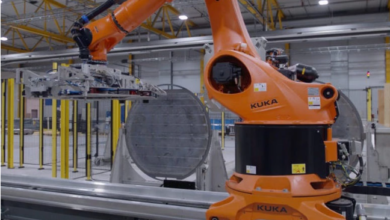UK pioneers using hydrogen on a commercial scale cement kiln
The trial used a mix of 100% net zero fuels, including hydrogen, for commercial-scale cement manufacture for the very first time in the world.

Mineral Products Association (MPA) and Hanson UK have successfully operated a cement kiln using 100% net zero fuel.
The Department for Business, Energy and Industrial Strategy (BEIS) have provided £3.2 million in funding for the project under its Industrial Fuel Switching Competition and is part of fuel switching trials managed by MPA at two sites.
The demonstration was conducted at Hanson Cement’s Ribblesdale plant in Lancashire, culminating several years of work. During the trial, the proportion of fuels in the cement kiln’s main burner was gradually increased to a wholly net-zero mix.
The fuel switching trial has used ‘grey’ hydrogen as a proof of concept, which can be substituted for ‘green’ hydrogen in future. At a 100% net zero mix, the proportion of fuels in the cement kiln was around 39% hydrogen, 12% meat and bone meal (MBM) and 49% glycerine. The trial aimed to demonstrate the pathway to moving away from using fossil fuels in cement and concrete production.
If fully implemented for the whole kiln system, nearly 180k tonnes/year of CO2 could be saved at the Ribblesdale site compared to using the traditional fuel of coal at the site.
Dr Richard Leese, MPA Director, Industrial Policy, Energy and Climate Change, said, “This world-first trial has demonstrated the potential of using net-zero fuel mixes for the manufacture of cement at commercial scale.”
Greg Hands, Energy & Climate Change Minister, said, “This project, supported by £3.2 million in government funding, is a key example of how we are supporting industry to reduce emissions and move away from relying on fossil fuels.”
Iain Walpole, Hanson UK’s environmental sustainability manager, said, “The results of the trial are exciting, and the prospect of using hydrogen in the fuel mix will help us – and others in the sector – on the road to net-zero carbon. It will also contribute to our ambition of supplying net-zero carbon concrete by 2050.”
Another demonstration using plasma energy with biofuel in the kiln’s calciner will be at the Tarmac Derbyshire site, alongside another trial exploring hydrogen as an alternative to natural gas for lime manufacturing. MPA will share results from all projects with relevant companies as best practice examples to spread and maximise the environmental benefits of the technology.
